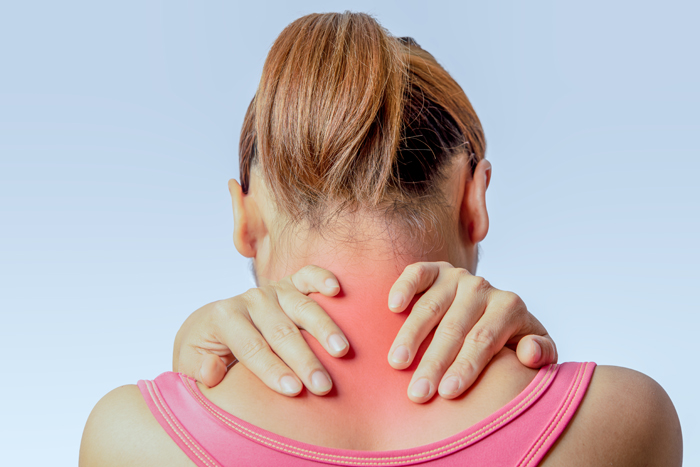Cervical Spondylosis Treatment in Sadashiv Peth, Pune
Cervical spondylosis is a general term used to refer to age-related wear and tear that affects the cervical spine. The cervical spine is the collection of bone disks and joints in the neck. As we age, the discs and joints in the cervical joints degenerate. Cervical spondylosis is extremely common with more than 85 percent of people above sixty affected by it. Cervical spondylosis is also known as osteoarthritis of the neck.
The symptoms of cervical spondylosis include neck pain, neck stiffness, bone spurs, and other symptoms.
What is Cervical Spondylosis?
The entire human spine consists of 24 vertebrae (bones of the spine) out of which the upper 7 vertebrae bones form the cervical spine. There are present cartilages, ligaments, and discs that help in the bones’ proper movement in between the bones. As we age, the cartilage wear, disks become cracked and dried, ligaments thicken. All these causes lead to cervical spondylosis.

What are the symptoms of cervical spondylosis?
Cervical spondylosis is very common and in most cases has no symptoms. Although when symptoms do occur, the most common symptoms are neck pain and stiffness in the neck.
The other symptoms include:
- Muscle spasms in the neck and shoulder muscles
- Headaches
- Grinding or popping noise or sensation while turning your neck
- Dizziness
- Weakness in hands or legs, trouble walking
- Loss of balance and lack of coordination
- A nagging soreness in the neck
What causes cervical spondylosis?
Our bones and disks in our cervical spine undergo degenerate changes as we age. These changes are normal but also cause problems such as cervical spondylosis.
Some of these changes are:
- Osteoarthritis: Osteoarthritis causes the cartilage to degenerate with time.
- Dehydrated disks: Disks are present in-between the bones. They provide support and cushion to the bones. As one ages, the discs dry out and shrinks by becoming thinner. Due to this bone-on-bone contact increases.
- Stiff ligaments: As we age, the spinal ligament stiffens and its flexibility is decreased.
- Herniated disks: Ageing causes crack in the disks which causes them to bulge out. These are called herniated disks. These bulged-out disks sometimes press on the spinal cord and nerve roots causing pain, numbness, or tingling.
- Bone spurs: As we age, the cartilage wears off. Thus to compensate for the lost cartilage and strengthen the spinal cord, our body responds with a bone overgrowth called bone spurs.
Who is at more risk of Cervical Spondylosis?
The major factor contributing to cervical Spondylosis is age. Other factors increase your risk of developing cervical Spondylosis. They are:
- Smoking
- Genetic factors
- The occupation requires overhead or downward work or staring at computer screens in improper posture.
- Previous neck injuries
When should you see a doctor?
You should consult a doctor when you notice a sudden loss of bladder or bowel control or onset of numbness.
Request an appointment at Apollo Spectra Hospitals, Swargate, Pune
Call 1860-500-2244 to book an appointment
What are the treatments of cervical spondylosis?
Cervical spondylosis can be treated. A few of the treatments are mentioned below:
- Ice, heat massage: A 20-minute ice or heat massage several times a day can help reduce the pain and symptoms.
- Physical therapy: Certain exercises can help you in relieving your pain. You must consult your physical therapist for proper guidance on these exercises.
- Oral medications: There are certain drugs such as ibuprofen, naproxen sodium, etc which help in reducing the symptoms and pain.
- Soft collar: You may get recommended by your healthcare provider to wear a soft collar which will reduce the pain and help the bones and muscles to relax.
Conclusion
Cervical spondylosis is quite common in people of old age. It is completely treatable if given proper attention and the right healthcare services.
Your healthcare provider will perform a physical examination to check the cause of pain and other symptoms. Your healthcare provider will check your neck flexibility, reflexes, gait, muscle strength, and check for trigger points. Sometimes, your healthcare provider may perform tests that include CT scans, X-rays, and MRIs.
There is no particular way to prevent cervical spondylosis as it is an age-related deterioration. You can keep a check on your lifestyle habits. If your job requires you to look downwards or upwards or keep your head in an awkward position, take short breaks. Massage with ice or heat to reduce soreness.
Symptoms
Our Top Specialities
NOTICE BOARD
CONTACT US
CONTACT US
 Book Appointment
Book Appointment


.svg)
.svg)
.svg)
.svg)








